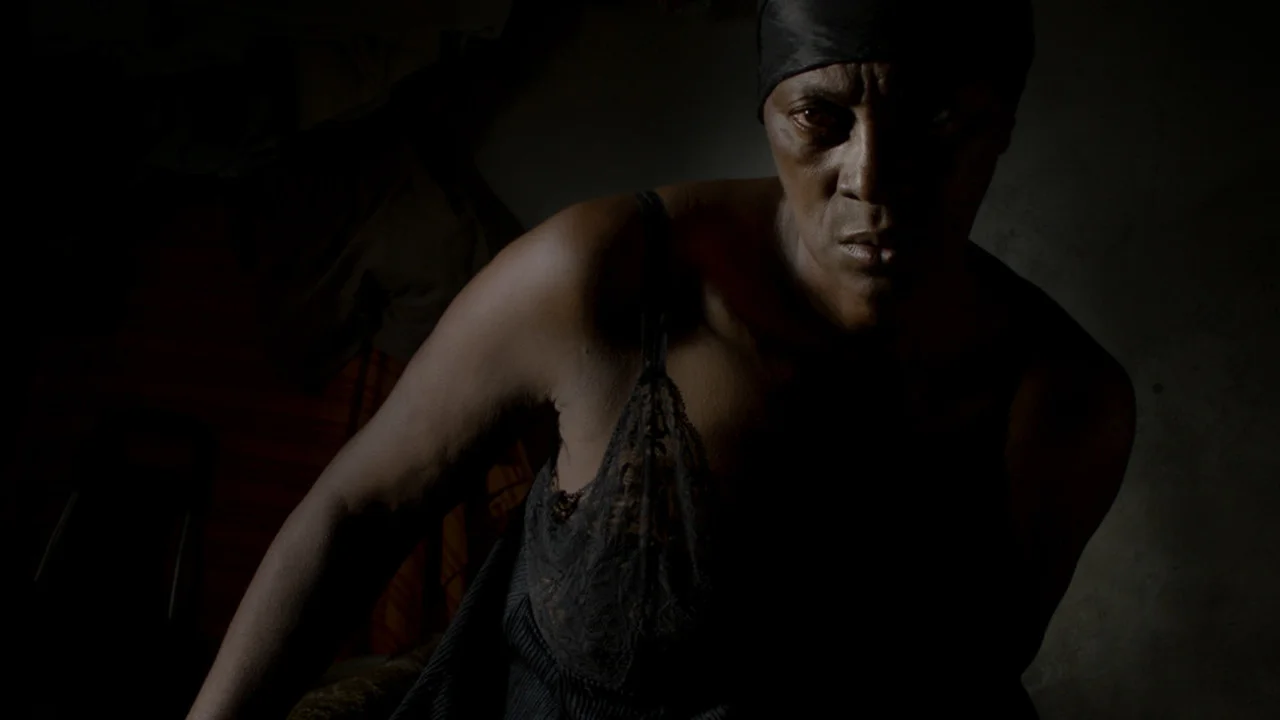Review by Andrew Swafford and Zach Dennis
Zach: For this one, I entered not having seen any of Pedro Costa’s previous work, which – judging from reactions around the festival – seemed to work both for and against me, as this seems to be one of his more accessible films for first-time viewers compared to other entries in his current cycle of films. Even without context, I was wowed by the visual language of the film and Costa’s play with shadows and light, which was unlike anything I’ve seen a modern director do. The central narrative, which follows the titular character coming back to Portugal to stay in the house of her estranged husband who just passed away, seems more concrete than some of his previous films, but I’ll let you expand on that since you went on a Costa-thon (Costa and Chill?) prior to TIFF.
Andrew: Costa-thon seems like a more apt phrase than Costa and Chill, because watching the three toughest Pedro Costa movies in rapid succession to prep for the festival definitely felt more like running a marathon than it did like chilling to some slow cinema. The darkness and silence in Pedro Costa’s movies is absolutely oppressive, reflecting larger structural forces that keep the nonfiction figures at their centers in a state of complete stasis and decay. Vitalina Varela is his fifth film in his cycle about Fontinaus (a slum of Lisbon, Portugal) and if anyone wants to hear me outline my thoughts on the four preceding films (Ossos, In Vanda’s Room, Colossal Youth, and Horse Money), they can check out our second TIFF Diary on Facebook, where I did just that. In short: these are tough movies, and I mostly admire them intellectually more than I enjoy them viscerally – and the cycle includes one film I find downright unwatchable. Still, Pedro Costa has a completely singular approach to filmmaking: dedicating himself to telling the stories of the extremely impoverished, living in the same slums they do, and allowing their personal lives and their ever changing sociopolitical context to dictate where the films go – all the while filming with complete control over the visual aesthetic.
But regarding Vitalina Varela specifically, I’ll echo the sentiment you referenced in your intro: this is one of Costa’s most accessible films narratively, as it has a clear protagonist (Vitalina), conflict (she missed her husband’s burial and wants to have a ceremony for him), dramatic arc (she seeks out Ventura, the protagonist of Colossal Youth and Horse Money, who is now working as a priest, to perform it), and, shockingly, catharsis. Of course, along the way, there are a lot of long, uncertain sequences of nightmarish gloom, but the fact that this movie has that narrative structure to hang onto – as well as a relatively brief running time – makes this a much easier sit than something like In Vanda’s Room, which is almost three hours long and eschews plot and visual beauty entirely. That film is likely supposed to be hard to look at, considering it represents the nadir of its community’s misery, and Vitalina Varela’s gorgeous digital cinematography – the aesthetic Costa has been gradually cultivating for over 20 years now – is similarly well-suited for this film’s life-affirming resonance. In her connection with Ventura, Vitalina finds a sense of closure with the past and hope for the future – two things that have been painfully absent from all of Costa’s work leading up to this point.
A Letterboxd review that helped crack Costa open a little for me was from Ethan Rosenberg, who called Costa’s cinema “[t]he logical endpoint of German expressionism.” Zach, seeing as you made an entire research-heavy video essay comparing expressionism to LAIKA, I’m wondering: how does that comparison strike you?
Zach: The set-ups of the lighting and shots scream German Expressionism, but to me, I think Costa was also channeling the movement through his narrative beats. As I point out in the essay, German Expressionism is more than just the slanted lines and jagged steps; it also uses its stories to speak to characters’ mental state without forcing that into the dialogue.
Essentially, this is a silent movie. There isn’t a lot of dialogue, and for the most part, you’re relying on these quiet sequences between her and Ventura (and maybe another figure), but for the most part it is her – alone – in this space that wasn’t even meant for her. So how do we understand her mental state? Costa implements these silent and German techniques to offer a glimpse into the tortured or wrestling nature of her mind, and I haven’t seen that much in films outside of that era. Ventura is battling what she feels is her duty as the wife of this man who has died and left not only this space in this nearly macabre neighborhood, but also this space in her life or the life she expected to have with him.
You could sit there and let her monologue her feelings about that, but she isn’t a professional actor and that plays into both her and Costa’s concept as it allows her movements, her eyes, how she envelops a space to tell us what she is thinking or feeling. That all plays directly into what German Expressionism embodies.
I need to re-watch this and more Costa, but was impressed with what I took away from this going in blind.

